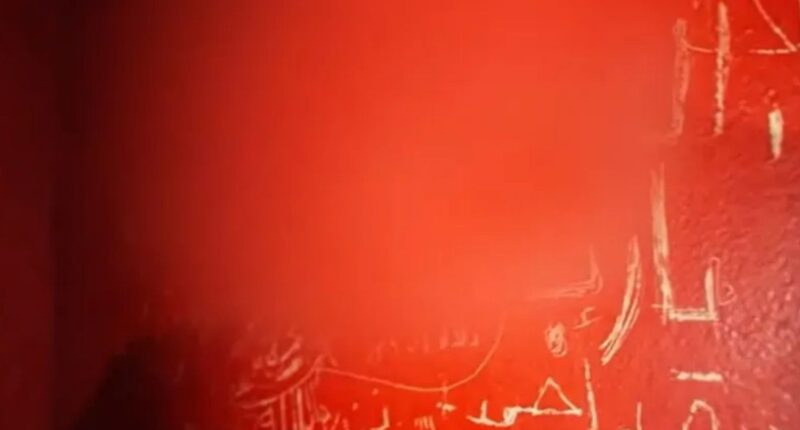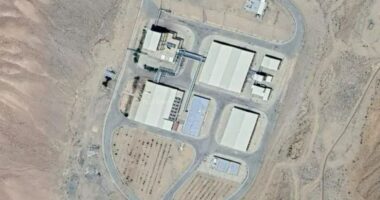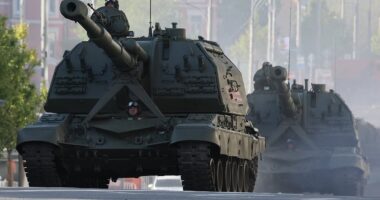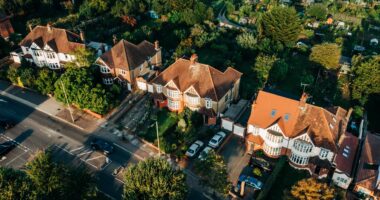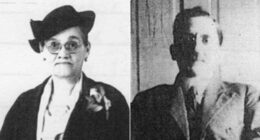THE mom of a missing US journalist abducted by Assad’s savage regime has discovered a chilling clue about her son in a Syrian prison.
After the departure of Assad’s violent government, Debra Tice managed to journey to Syria. She examined a clue in a prison cell that she believes was left by her son.



Austin Tice, who would now be 43, was kidnapped 12 years ago in a suburb outside the Syrian capital Damascus whilst reporting on the civil war.
In the most recent video showing him alive, Austin is seen being guided while blindfolded by individuals who compel him to utter Muslim prayers. He then expresses in a state of clear panic: “Oh Jesus, oh Jesus. God.”
Following her son’s abduction, Debra spent several months in Syria attempting to locate him. However, she was prevented from entering the country by Assad’s administration.
Debra returned to Damascus last week for the first time in almost ten years to see for herself a patch of graffiti on a cell wall which she is convinced was left by her son.
The footage shows Debra descend down through dark passages at the prison, along with Nizar Zakka, president of the Hostage Aid Worldwide NGO.
She is guided to the tiny cell where her son may have been held, and sheepishly peers in.
Inside the cramped cell, the scarlet-red walls are scratched all over with the marks of past prisoners.
As soon as Debra enters, she points to a patch just above head height and lurches towards it.
“It’s right here,” she says.
The mother against the opposite wall, head back, and stares at the engraving for a long time.
Afterwards, Debra said: “I hardly know what to say about that experience it was beyond anything I could have imagined.”
Speaking at a press conference in Damascus, she said: “These pictures don’t even begin to tell you how unbelievable horrible, terrible, nightmare they [the cells] are.
“For all the mothers whose sons disappeared in these dungeons – our hearts are joined.
“For all those looking now for answers about their family members, I am here for you in solidarity.”
President Assad’s tyrannical regime was dramatically toppled from power six weeks ago, and thousands of its prisoners emerged into the light after years of being locked up.
But Austin wasn’t amongst them.

This has left Debra with more questions than answers.
She said: “It’s hard for me to think about my way forward here.
“Our son has been held by the Syrian government all this time.
“Who is holding him now? Where is he? It’s like first grade again.”
Debra and Nizar believe that Austin is being held in a safe house somewhere by remnants of the regime, and so are determined to continue the search.
The pair were able to meet with Syria’s new leader, Ahmed Al-Sharaa.
Afterwards, Nizar said: “[Al-Sharaa] believes like all of us that Austin is alive, and he is going to joined with his mum, and we promised him that when he is back we will come and visit with Austin.
“We have enough information that Austin is alive, is in a safe house, is controlled somehow by the regime.
We are receiving this information from the highest sources […] so we don’t see any reason to think differently.”
Debra is hopeful that Donald Trump’s presidency will be good news for her son.
She said: “I feel hugely optimistic, and one of the main things is that his people reached out to me – they are in, they are ready, they want Austin home.”
Assad’s bloody regime was booted out of Syria by a lightening rebel offensive in December, and the dictator then fled to Russia for protection from Putin.
Thousands of families have since been reunited with loved ones who had been rotting in government jails – but thousands more are still searching.


The Assad Dynasty
THE Assad dynasty in Syria began with Hafez al-Assad – who seized power in 1971 through a military coup and established an authoritarian regime.
His rule focused on centralised government control, military strength, suppression of dissent, aligning Syria closely with the Soviet Union, and an anti-Israel stance.
He established a cult of personality and corruption flourished as loyalty to Hafez became the most important value.
Bashar was not the first choice to succeed his father, with his elder son Bassel groomed to take over the role.
Bashar was working as an ophthalmologist at Western Eye Hospital in London when Bassel died in a car crash in 1994.
Suddenly, Bashar became the heir apparent and was called back to Damascus to be groomed for leadership.
He spent six and a half years learning the ropes from his father and working in the military.
Hafez died from a heart attack in 2000 and, with the loyalty of his party, transferred power to Bashar establishing the first Arab dynastic republic.
Initially, there were hopes for liberal reforms under Bashar, but hopes faded as he instead continued his father’s repressive policies.
When protesters rose up in 2011, Assad brutally sought to crush them with harsh violence.
But, he lost the support of many of his people and brought about the Syrian Civil War.
In 2013, the cruel dictator even used chemical weapons on rebel areas as he did anything to stay in power.
The civil war dragged on killing hundreds of thousands, destroying cities, and opening the way for ISIS to flourish.
Eventually, Assad gained the upper hand after Iran sent in Hezbollah crack forces and Russia sent in jets to bomb rebels and mercenary group Wagner to fight them.
It appeared that Assad was on the brink of winning the war earlier this year with the rebels confined to an area in the northwest of the country.
Assad chose not to negotiate with the rebels and instead sought to defeat them completely.
But the rebels launched a surprise offensive on November 27 and swept aside Assad’s corrupt and disloyal army.
After seizing Damascus in a swift and decisive offensive, rebel forces declared victory and announced that the city was “free of Assad.”
The dictator fled Syria in total humiliation – having to issue a statement through the Russians he had resigned the presidency and left the country.
Bashar has now been given refuge in Moscow and is currently under Russian protection.
The collapse of the 54-year-old Assad dynasty ignited celebrations across Syria.
In the capital, thousands poured into the streets, waving rebel flags and lighting flares.
Statues of Assad and his late father, Hafez, were toppled in symbolic acts of defiance.
